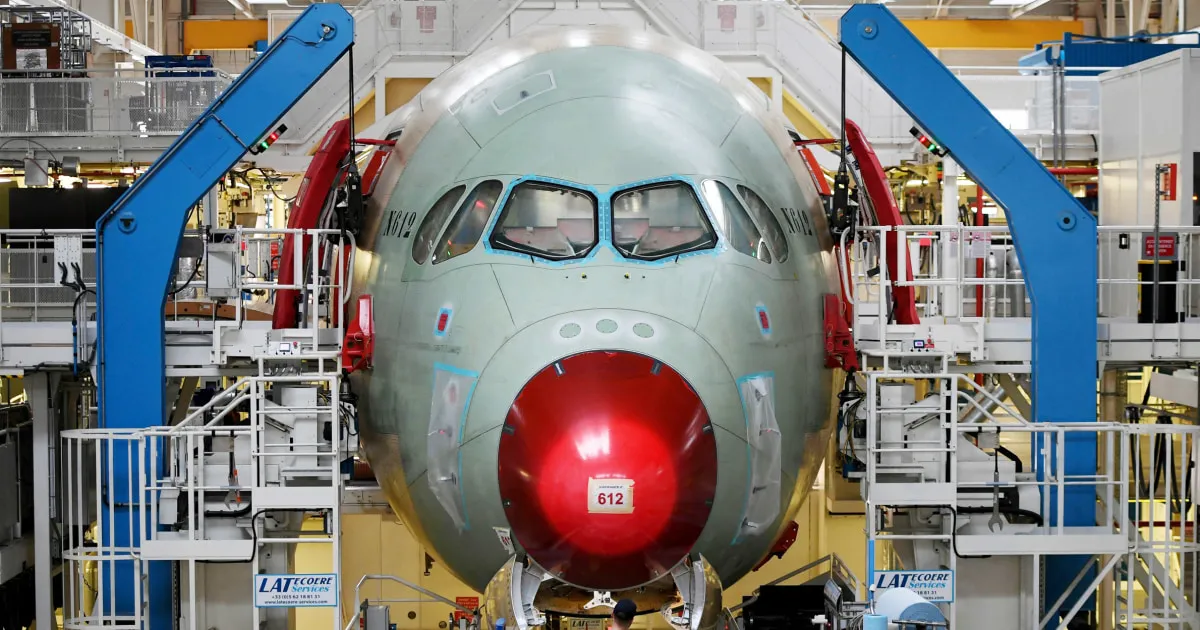The Federal Aviation Administration said it would investigate allegations that titanium had entered the supply chain via falsified documents.
Boeing and Airbus, the two biggest commercial airline makers, may have used titanium sold using fake documents, according to evidence from a supplier that has triggered a Federal Aviation Administration investigation.
The FAA said in a statement to NBC News on Friday morning it would look into allegations from Spirit Aerosystems that the two aviation giants used titanium in their planes that came with paperwork verifying its authenticity that could have been falsified.
The news adds to a troubled period for Boeing, which is the subject of ongoing federal investigations for alleged safety problems. But the news also brings its fierce rival, France-headquartered Airbus, into the wider scrutiny the aviation industry is facing.



How the heck does one not notice that a sheet of titanium is fake? That stuff is special, and if your sheets are suddenly totally different, one should notice that by a number of parameters.
It’s not that the titanium metal is fake, it’s probably real. By “fake” what they mean is that the part made with the titanium isn’t what the documentation for it claims. It may have been made by a different company than what the documentation says or it may not have been tested in the way that the documentation says.
Every last piece, down to the tiniest screw, in a commercial airplane has a paper trail and for these parts someone is saying that the paper trail has been falsified. That’s the “fake” part.
The question is how they found out. Lucky audit or failing parts?
Probably someone in QA was doing a spot check and was unable to verify the documentation from an upstream manufacturer for the materials. For example, the mine the titanium was sourced from may have had a specific ore lot listed an absurd number of times or the foundry was listed as performing material analysis done in house for procedures they normally would be required to have done by an independent lab.
Yep I used to do AS9100 audits and that would have caught it.
Still titanium, but likely sourced differently and not batch tested to verify exact mechanical properties. Only time you’d tell the difference is when it fails prematurely.
Presumably there must be something physically different about the weaker titanium, like a different structure of all the crystals in it or something? Is there any way to measure that?
Sometimes only by destructive testing. But either way, the high cost of the parts is the paper trail verifying the testing to a certain standard.
https://en.wikipedia.org/wiki/X-ray_fluorescence
That’s a popular way to analyze composition.
I’m aware that it can analyze chemical composition (I work in a factory that relates to such devices), but I’m unaware of them being able to detect things like weaknesses in a grain structure, the devices I’m familiar with at least would just tell you if a piece of titanium has other elements contaminating it. Unless there’s more that can be done with them than I’ve had explained to me, which is possible
I don’t know about crystalline structure, but impurities are probably the most common way that a sample might fail testing. I’m sure that improper annealing or something would also cause problems, but I’m not a metallurgist so I can’t say for sure.
It’s not like they swapped titanium for balsa wood. The origin docs were falsified or missing, which could mean anything from they weren’t the right purity but were shipped anyway to they were imported from Russia and illegally bypassing sanctions.
This is a supply chain integrity thing. They’re not alleging that the titanium wasn’t actually titanium (which as you said, would be noticed immediately).
Contains a certain level of impurities that doesn’t meet with guarantees?
Ok, that might be a thing.
Right, but they were likely so cheap that it didn’t matter.